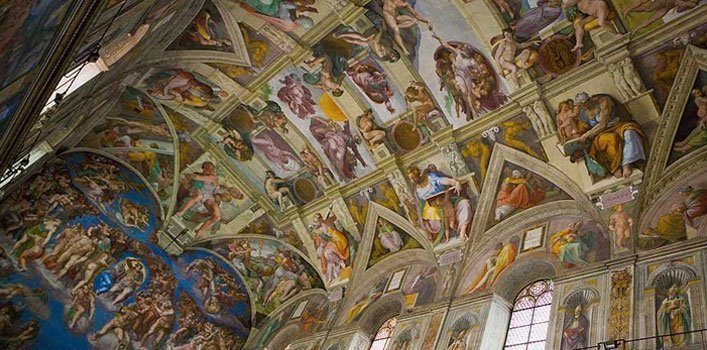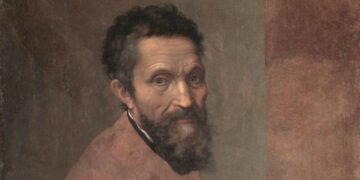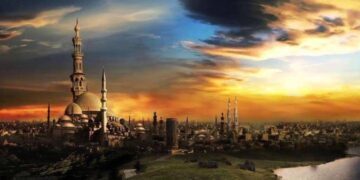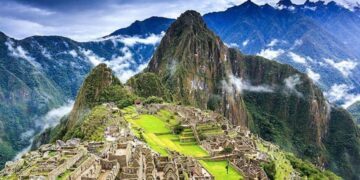The Sistine Chapel is one of Rome’s most popular and prized historic sites.
Set within the Vatican City and Museums, it welcomes around 25,000 visitors a day.
The world-famous ceiling frescoes by Michelangelo are of course the main attraction, forming a masterpiece of astonishing beauty.
Despite cameras being banned in the chapel, the visit will stay locked in your memory!
Here are 25 fascinating facts about the Sistine Chapel to give you all the more reason to visit this stunning attraction.
The Sistine Chapel takes its name from Pope Sixtus IV, who commissioned its construction on the foundations of the original Capella Magna in 1477.
The chapel has the same dimensions as the Temple of Solomon, as described in the Old Testament.
Before work started on the ceiling of the Sistine Chapel in 1508, it had been adorned with a blue night sky with golden stars, painted by the Umbrian artist Piero Matteo d’Amelia.
Michelangelo only reluctantly accepted the commission to paint the ceiling of the Sistine Chapel, as he considered himself to be first and foremost a sculptor.
Michelangelo struggled with the physical strain of the work and in 1509 he even wrote a poem about it, complaining to his friend Giovanni da Pistoia “I’ve already grown a goitre from this torture”.
It has been commonly believed that Michelangelo painted the ceiling lying on his back, but he actually constructed his own system of scaffolding, so that he could paint standing up for more precision and control.
The area of the Sistine Chapel ceiling measures about 1/6 of a football field – that’s around 12,000 square feet.
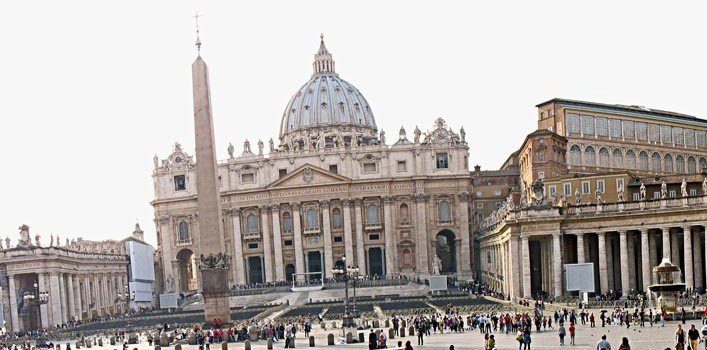
Works of art by Michelangelo are not the only ones on display in the Sistine Chapel. You can also see frescoes and works by Domenico Ghirlandaio, Pietro Perugino, Cosimo Roselli and Sandro Botticelli.
Michelangelo worked on the frescoes for four years and left God until last – he wanted to first refine his technique to depict Him perfectly.
God is depicted as an older man with flowing gray hair – this image inspired centuries of Christian paintings to come.
The altar wall features another famous painting: The Last Judgement. It was also painted by Michelangelo, who returned twenty-two years after completing work on the ceiling.
Incredibly, Michelangelo completed the entire ceiling without being able to see his work as a whole, since the scaffolding remained in place right until the very end. The first time Michelangelo saw his creation was at its unveiling!
Although the frescoes have proven very resilient, there is a small part of the sky in the panel depicting Noah’s escape which is missing, due to an explosion at a nearby gunpowder depot in 1797 that caused the plaster to fall off.
There has been much analyzis of the allegories and representations within the paintings. For example, it is possible that The Creation of Adam draws parallels to the human brain–reasonable given Michelangelo’s expertise in anatomy. The shapes that make up the figure of God also make up an anatomically accurate figure of the human brain, complete with stem, front lobe and artery.
Another example is the portrayal of Saint Bartholomew, in the The Last Judgement, holding his flayed skin. Does the skin contain a self-portrait of Michelangelo himself?
The many nudes in the frescoes have caused controversy in the past. In 1564, the Council of Trent deemed the images indecent and ordered Daniele da Volterra to cover them up with fig leaves, clothing and other items.
During the major restoration efforts of the 1980s-1990s, many of these additions were removed, revealing numerous, previously unseen details.
Acorns form a recurring motif in the frescoes. This is a reference by Michelangelo to the patronage of Pope Sixtus IV, whose family name was Rovere – meaning oak, in Italian.
The Sistine Chapel is a historic building of such acclaim that over five million people come to visit it every year – that’s equal to the population of Norway!
The Sistine Chapel is also in use as the Pope’s private chapel, further adding to the visitor numbers.
The College of Cardinals meets at the Sistine Chapel to submit their votes under oath each time a new Pope is elected, as they have done since 1492.
There is a small side room nicknamed the Room of Tears. This is where the chosen candidate is taken after winning the election, to relieve the emotion of the election process.
Cameras are banned during visiting times to protect the paintings. However, during the election of a new Pope, security is stepped up: the College of Cardinals has to be scanned for listening devices before entering. There are 115 security checks in total!
Please dress appropriately when visiting the chapel, covering your shoulders and legs to below the knee. You may otherwise be refused entry or asked to cover up. Visitors are asked to respect the code of conduct.
The greatest danger posed to the Chapel by tourists is invisible to the naked eye: the sweat, carbon dioxide and skin flakes of twenty-five thousand visitors a day. A humidity and temperature control machine is being developed to counteract this threat.
The Sistine Chapel will forever be one of Rome’s most popular places to visit thanks to the sheer scale and exceptional artistry of the masterpieces it houses.
It is protected by Papal traditions in its location within the Vatican City and remains one of the most important religious destinations in the world.

